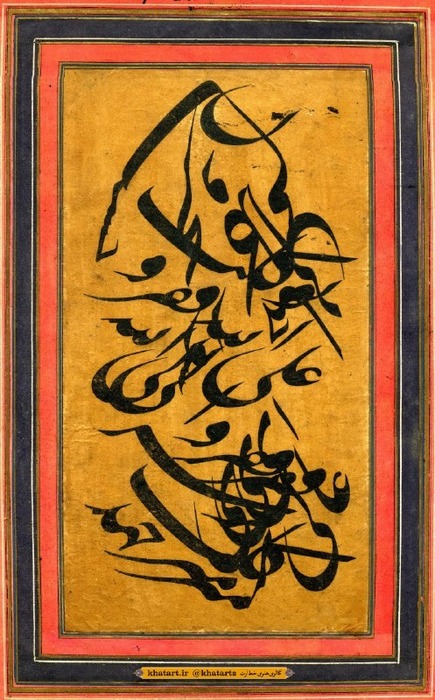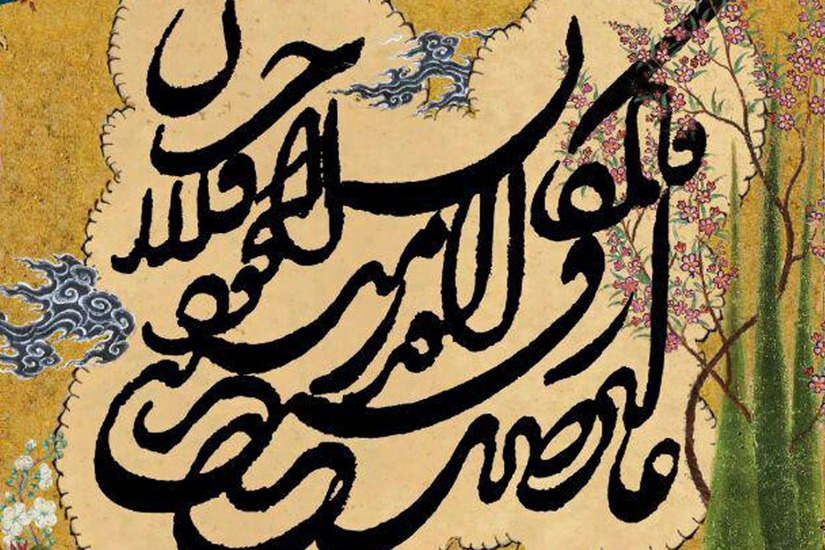
Darvish ʿAbdolmajid Taleqani: Pioneer of Shekasteh-Nastaliq in Iran
Darvish ʿAbdolmajid Taleqani: Pioneer of Shekasteh-Nastaliq in Iran
Darvish Abdolmajid Taleqani, the most renowned Iranian calligrapher of the 12th century in the Shekasteh-Nastaʿlīq script, was also skilled in composing poetry. The exact date of his birth is unknown, but based on some evidence, it seems he was born in 1147–1148 or 1150 AH in the village of Mehran, Taleqan. Due to the loss of his parents during adolescence, he migrated to Qazvin, where he adopted the life of a darvish. Later, he moved to Isfahan, where he lived until the end of his life. Due to this long stay in Isfahan, he is also referred to as “Darvish Majid Shekasteh-Nevis Isfahani.” Darvish Abdolmajid perfected his knowledge and art in Isfahan, and his good nature made him a beloved figure among scholars and artists. He interacted with poets such as Lotfali Beyk, Azarbigdeli Hatef, and Sahba, and in his own poetry, he initially used the pen name “Khamoosh” and later “Majid.” Today, about 1,500 verses of his poetry are available. Darvish, who lived a modest life, relied on the support of the nobility and elite of Isfahan to make a living. An examination of his poetry shows that in the early 1170s AH (and slightly before), he spent his time composing verses about the births, marriages, and deaths of the nobility, as well as receiving patronage. It appears that Darvish Abdolmajid turned to the art of calligraphy during the 1170s AH, and it did not take long for him to gain recognition in Isfahan. By the late 1170s, he earned his living through piece-writing (qat‘eh-nevisi). The signatures on his works indicate that around 1179 AH, he came under the patronage of Mohammad Rashid Beyg, for whom he wrote pieces and resided in his house or garden. Mirza Abdulvahab Kalantar, the then-governor of Isfahan, also supported Darvish and would take calligraphy samples from him. Darvish Abdolmajid sometimes sent some of his pieces to cities like Kerman and Shiraz at the request of admirers. However, despite all this support, the signatures on many of Darvish’s works reflect his distressed state. It even seems that some people angered or antagonized this master calligrapher. Occasionally, to counter those who mocked his handwriting as unattractive, he would faithfully copy the works of previous masters and present them under the masters’ names to the self-proclaimed connoisseurs, yet these claimants failed to recognize the authenticity of the pieces. Darvish Abdolmajid contracted malaria at least from the year 1182 AH, and the weakness caused by His illness impaired his ability to write. He even declined an invitation from Abolfath Khan, the eldest son of Karim Khan Zand, who had invited him to Shiraz, due to his illness. According to Maftun Donbali, Darvish was also invited several times to India, but he refused because of his incapacity. Ultimately, this illness claimed his life around the age of 35. Some sources record the year of his death as 1185 AH, but Soheili Khansari, based on the gravestone of this calligrapher and the dated poem by Rafiq Esfahani inscribed on it, identified 15 Muharram 1186 AH as the exact date of his passing. The tomb of Darvish Abdolmajid is located in the Takht-e Foulad Cemetery in Isfahan, opposite the Abolqasem Mirfenderski Tekyeh.
The progression of Darvish Abdolmajid Taleqani in calligraphy
A review of Darvish Abdolmajid Taleqani’s works shows that he initially learned Nastaʿlīq script and later gravitated toward Shekasteh-Nastaʿlīq. In addition, he also wrote Shekasteh-Taʿlīq proficiently.It is said that Mirza Hasan Kermani was Darvish’s teacher in Shekasteh-Nastaʿlīq, but this claim seems incorrect, as Mirza Hasan passed away in 1100 AH. Mirza Koochak Esfahani, Fazl-ʿAli Beg Donbali, and Khajeh Abolhasan Fasaei are counted among Darvish’s most prominent direct students. Some calligraphy scholars place Darvish Abdolmajid in Shekasteh-Nastaʿlīq as highly as Mirza Ahmad Neyrizi in Naskh and Mir Emad in Nastaʿlīq, and others consider him the fourth pillar of calligraphy. Researchers view him as an artist who rendered obsolete the styles of previous masters like Shafiʿa and Shamlu, and introduced a novel design in calligraphy.
The style of Darvish Abdolmajid in calligraphy
Darvish wrote Shekasteh script with great mastery, ranging from light, delicate strokes (Ghubar and Khafi) to full six-dang Jali (bold, large-scale) forms. His prominence in promoting and spreading Shekasteh-Nastaʿlīq was so influential that it caused a decline in the use of Taʿlīq script in Isfahan. After this, all calligraphers began experimenting with Shekasteh as their secondary script instead of Taʿlīq. Darvish Abdolmajid Taleqani signed his works with various titles and signatures, including:
- Darvish Abdolmajid Shekasteh
- Negar Darvish Abdolmajid Shekasteh-Nevis
- Abdolmajid Khamoosh
- Darvish Abdolmajid Taleqani
- Abdolmajid Faqir
- Abdolmajid
- Abdolmajid Darvish
Through comparing Darvish’s script with that of earlier calligraphers, the innovations he introduced in Shekasteh-Nastaʿlīq can be considered in three main areas:
1. Individual Letters (Mofradat):
The most significant transformation Darvish brought to Shekasteh-Nastaʿlīq concerns the individual letters of the script. Aware that Shekasteh, despite its diversity, had complex rules arising from fast writing, he refined the letters.
His main contributions in this area include:
- Creating uniformity among similar letters, so that all letters of the same type appear visually consistent.
- Assigning a distinct form to each letter, based on the principles of fast writing, separate from Nastaʿlīq and Taʿlīq, which was an innovative approach at the time.
Additionally, he introduced many new shapes in letter combinations, further enhancing the aesthetic and structural harmony of the script. The specific forms Darvish created for combining letters in certain frequently used words became enduring in the history of Shekasteh-Nastaʿlīq. After Darvish ʿAbdolmajid, all calligraphers adopted his method, leading to the obsolescence of all earlier diverse styles. Darvish perfected, organized, and integrated all previously designed forms, creating a cohesive whole and a complete, exemplary model. For this reason, Fazeli, a prominent researcher in the field of calligraphy, describes Darvish as the artist who defined the pure form of Shekasteh-Nastaʿlīq.
2. Composition: Darvish ʿAbdolmajid made significant innovations in the composition of Shekasteh-Nastaʿlīq pieces, most notably in the Ghobar-e Sadeq compositions.
In addition, he popularized Shekasteh calligraphy in siyah-mashq (densely filled) form. His siyah-mashq works are mostly combinations of jali (bold) and khafi (thin) scripts. Even the pieces he wrote in horizontal notebook format display a strong and cohesive composition.
The principles he applied in arranging words greatly enhanced the unity of the compositions. Darvish ʿAbdolmajid’s innovative approach in this area became widely adopted, and by the late Qajar period, Seyyed Ali Akbar Golestaneh applied it masterfully in his notebook-style pieces.
3. Text: Among Darvish ʿAbdolmajid’s notable contributions regarding the text itself is his disregard for the literary aspect of what he wrote. Before him, calligraphers would select literary texts or poetry for their pieces and use the literary content to enhance the artistic impact of the work. In contrast, the main texts of many of Darvish’s pieces reflect personal matters or requests directed to someone, often in simple and largely spontaneous language. He focused primarily on the visual and formal aspects of his calligraphy rather than its conceptual or literary meaning—a practice that, before him, had only been experimented with in siyah-mashq (dense calligraphy).
Many pieces bearing Darvish ʿAbdolmajid’s signature can now be found in various collections and museums; however, unfortunately, many of them are forgeries. The reason for this is that the material and cultural value of Darvish’s works tempted numerous calligraphers to falsely attribute their own works to him. Additionally, some calligraphers skilled in shekasteh-nastaliq would closely imitate his style as a form of practice or to showcase their own abilities in this script. This was a common practice in the past, and even a reputable calligrapher like Mirza Gholamreza Esfahani sometimes signed some of his own shekasteh-nastaliq pieces with Darvish ʿAbdolmajid’s name. Some pieces attributed to Darvish ʿAbdolmajid Taqalani mention Shiraz, Kashan, or Borujerd as their place of creation in the signature; however, since he never left Isfahan, these works are likely not authentic. In conclusion, Darvish ʿAbdolmajid Taqalani ranks among the most prominent calligraphers, as he was able to consolidate the rules of shekasteh-nastaliq, elevating its beauty and eloquence to perfection. Many calligraphy scholars therefore consider him the greatest calligrapher in the shekasteh-nastaliq style in Iranian history.
Works of Darvish ʿAbdolmajid
Apart from numerous calligraphic pieces, a few manuscripts written by or attributed to Darvish ʿAbdolmajid have survived, including:
- Divan of Hafez (1170 AH)
- Divan of Moshtaqi Esfahani (1172 AH)
- Golshan-e Raz by Sheikh Mahmoud Shabestari (1180 AH)
- Jang-e Sher-e Beyazi (1179 and 1180 AH) – held in the collection of Yadollah Kaboli Khansari
- Bustan of Saadi (1183 AH)
It appears that Darvish ʿAbdolmajid was preparing a manuscript of Golestan of Saadi, as he requested paper for this work in a letter to one of his patrons.
| Name | Darvish ʿAbdolmajid Taleqani: Pioneer of Shekasteh-Nastaliq in Iran |
| Country | Iran |
| Type | Calligraphy |
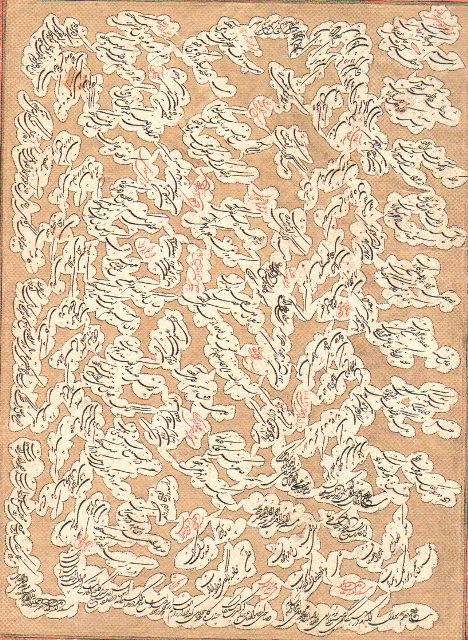
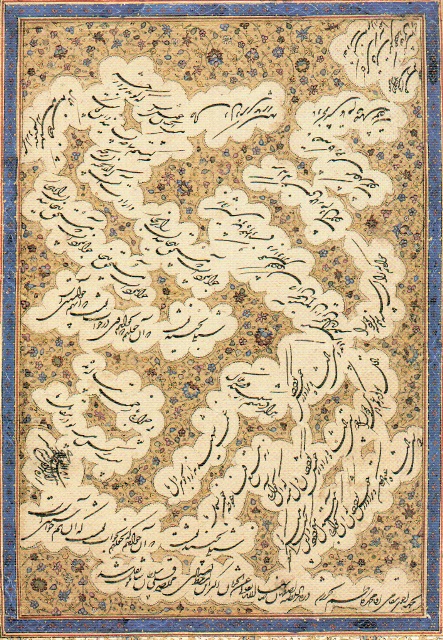
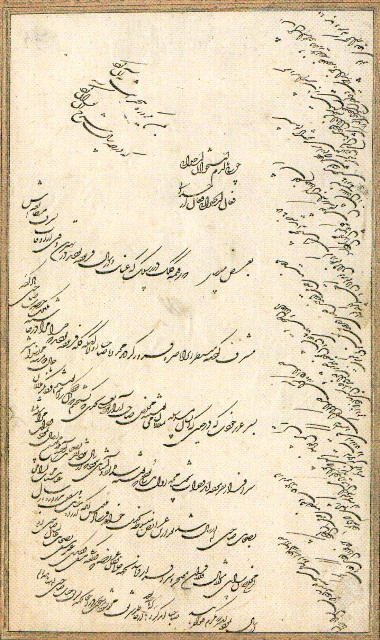
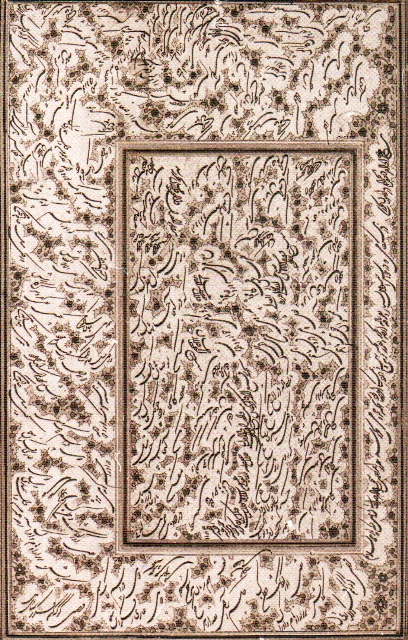




Choose blindless
Red blindless Green blindless Blue blindless Red hard to see Green hard to see Blue hard to see Monochrome Special MonochromeFont size change:
Change word spacing:
Change line height:
Change mouse type:
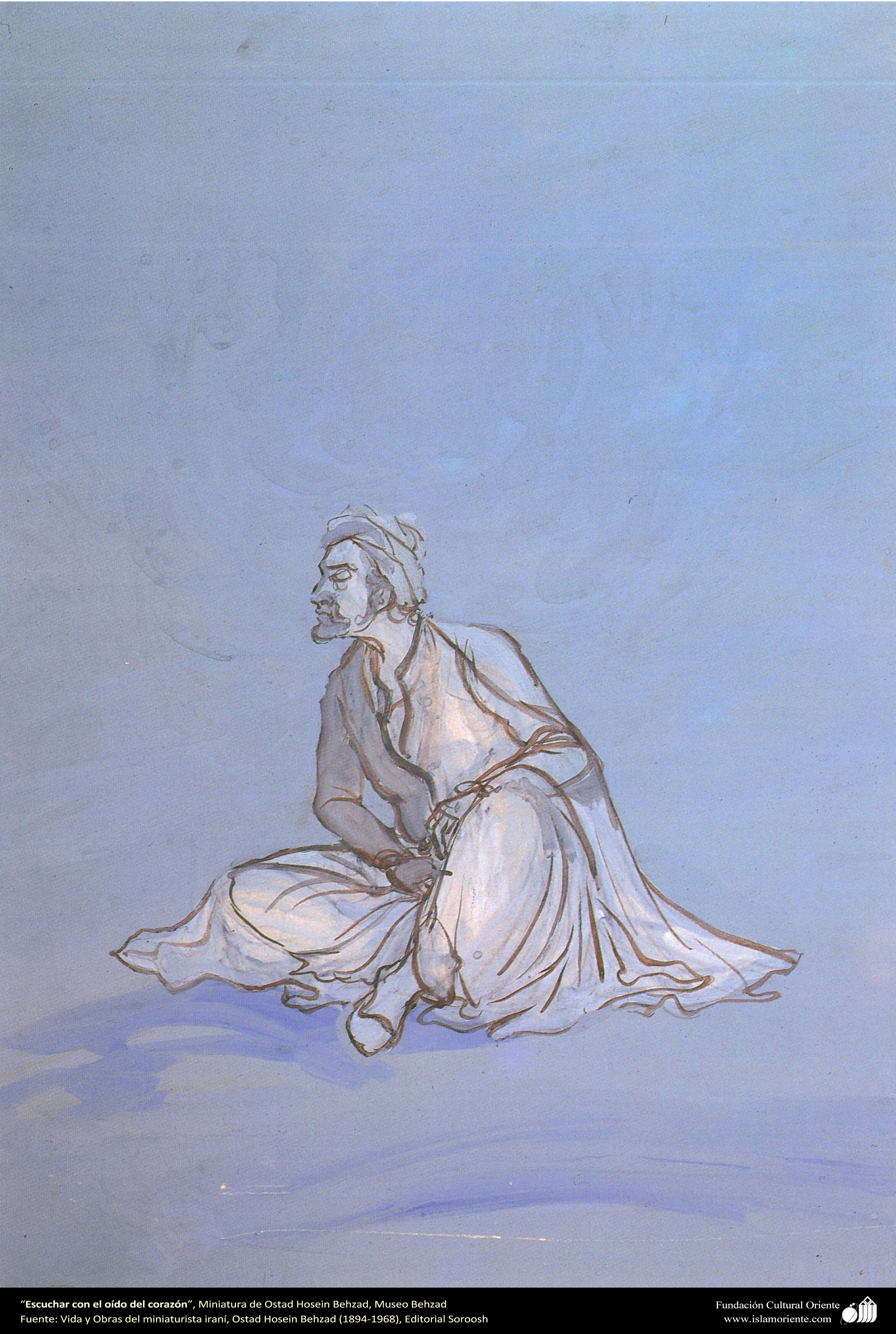

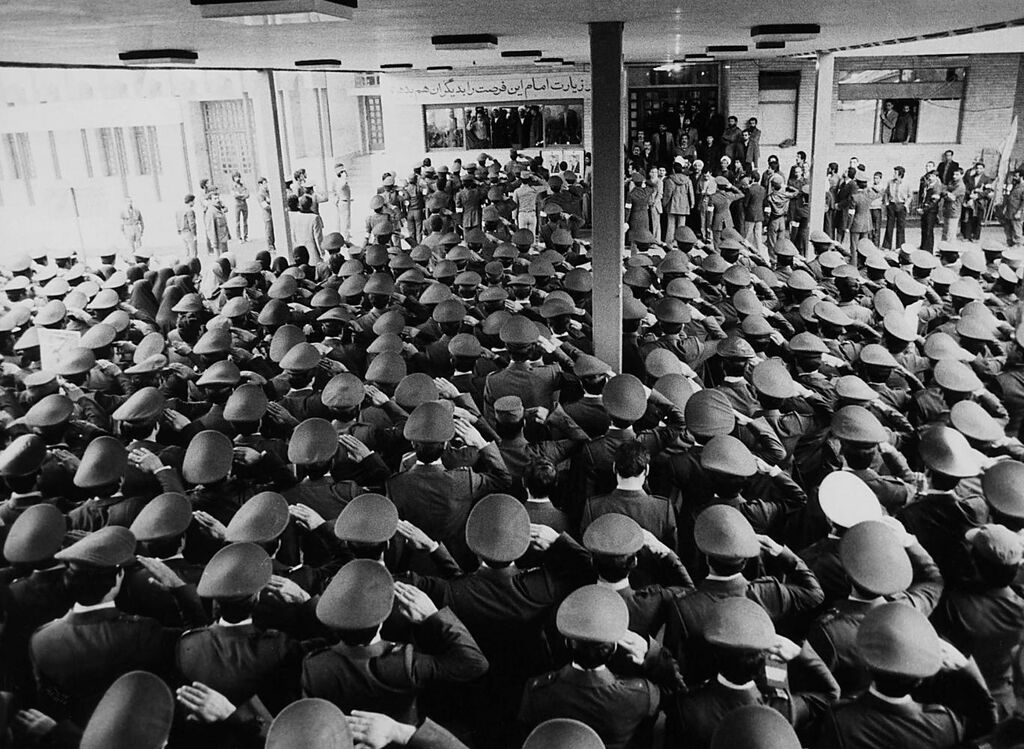
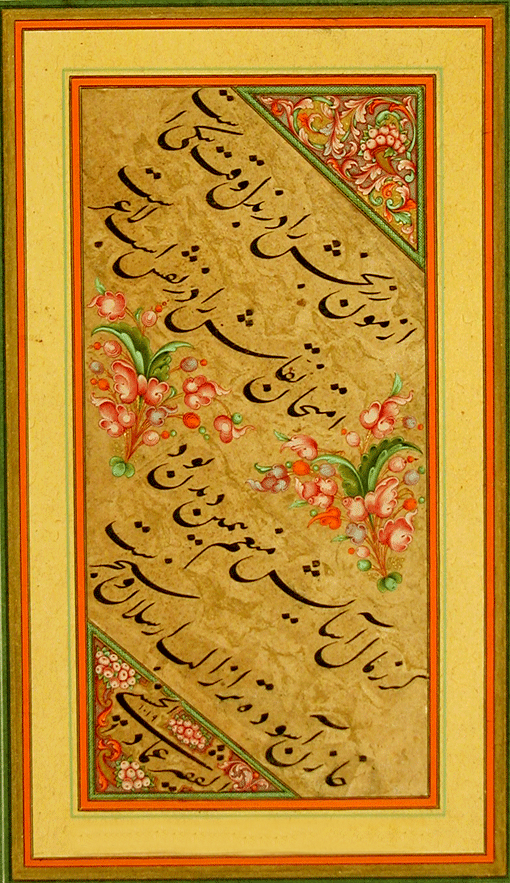
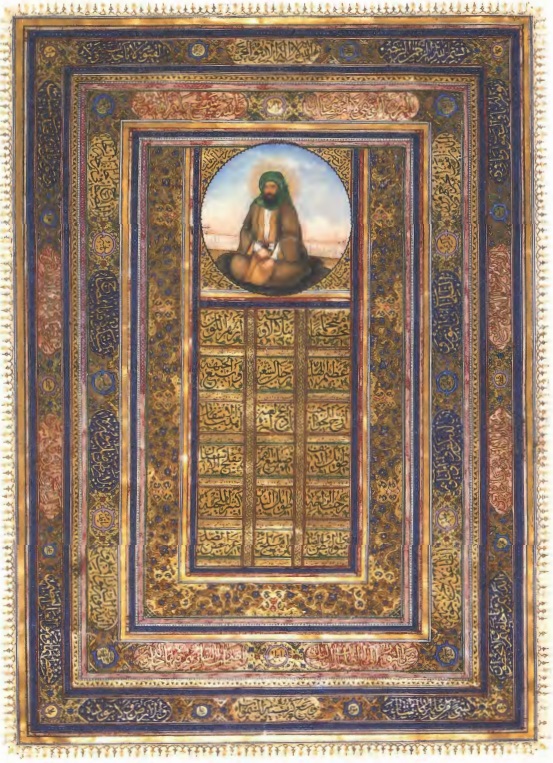
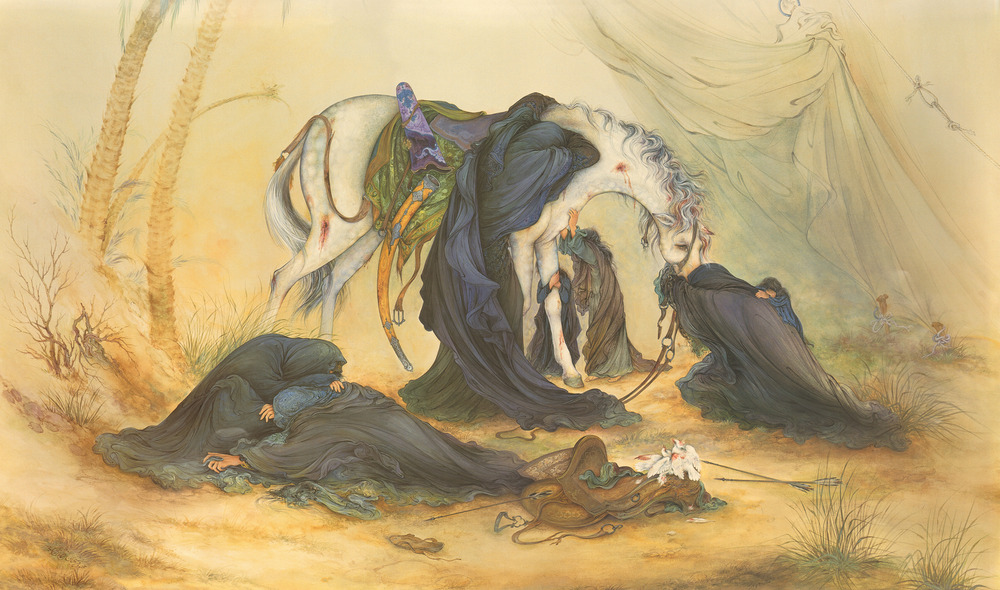
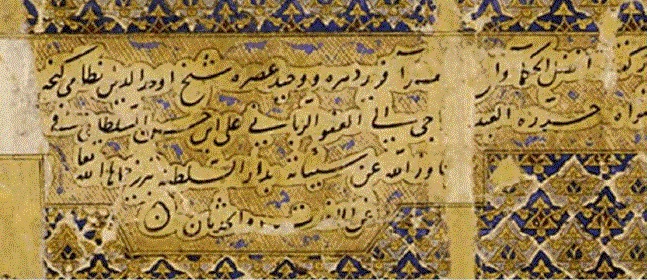
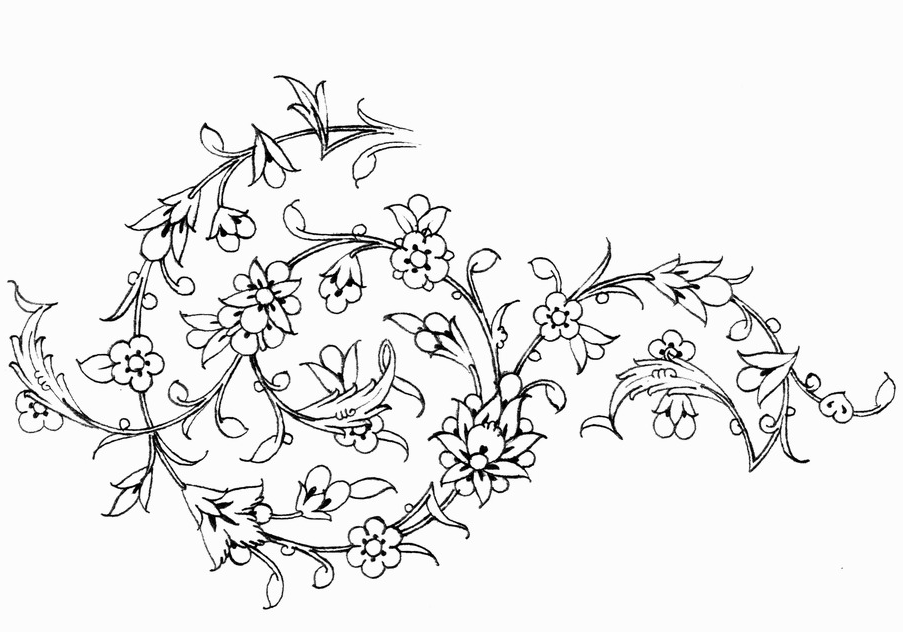
(7)_1_1.jpg)
